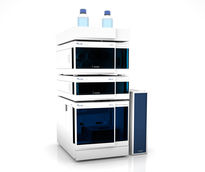European Spallation Source: First patent will secure scientific neutron detection
The European Spallation Source (ESS) in Lund has been granted its first patent in collaboration with researchers at Linköping University. The innovation solves a significant technological challenge faced by many research facilities world-wide, and secures high-class experimental opportunities at the future ESS. It can also be developed for commercial production.
“It allows us not only to secure the detector supplies needed for ESS, but to spin out the production in the framework of our new innovation activities, satisfy further market demands, and contribute to growth and jobs.”
The European Spallation Source overcame a significant technological challenge it was facing for its construction and operational phase by inventing a new technology that will be the basis for neutron detectors used in many of its 22 instruments. With the new boron-10-based detectors, ESS will secure efficient and high-class neutron detection in its instruments, and thus the best experimental opportunities for the science community.
Currently, helium-3 is used by scientists for materials research, as a crucial component in neutron instrument detectors. The detectors measure how the neutrons react to a sample studied by a scientist. Therefore, the result of an experiment is dependent on efficient detectors. The growing scarcity of helium-3 has affected all current materials research conducted at neutron science facilities worldwide, and has necessitated the development of new technologies for neutron detection.
In order to guarantee efficient neutron detectors at the future ESS facility, and avoid dependence on helium-3, whose production is extremely limited, and consequently very expensive, the Neutron Detector Group at ESS and scientists at the Thin Film Physics Division at Linköping University launched an extensive R&D work aimed at enabling the use of enriched thin films of boron-10 carbide for ESS’ detector systems, instead of using helium-3.
Most read news
Other news from the department science
These products might interest you

DAWN® by Wyatt Technology
The instrument for Multi-Angle Light Scattering (MALS): The DAWN® from Wyatt Technology
The world's most advanced light scattering instrument for absolute characterization of macromolecules

AZURA Analytical HPLC by KNAUER
Maximize your analytical efficiency with customized HPLC system solutions
Let your application define your analytical system solution

Get the chemical industry in your inbox
By submitting this form you agree that LUMITOS AG will send you the newsletter(s) selected above by email. Your data will not be passed on to third parties. Your data will be stored and processed in accordance with our data protection regulations. LUMITOS may contact you by email for the purpose of advertising or market and opinion surveys. You can revoke your consent at any time without giving reasons to LUMITOS AG, Ernst-Augustin-Str. 2, 12489 Berlin, Germany or by e-mail at revoke@lumitos.com with effect for the future. In addition, each email contains a link to unsubscribe from the corresponding newsletter.


























































